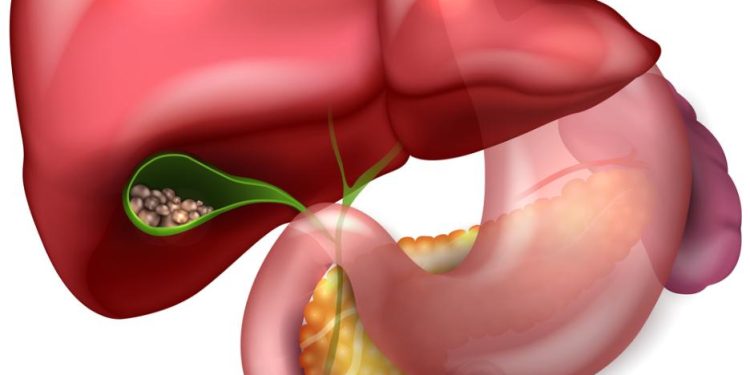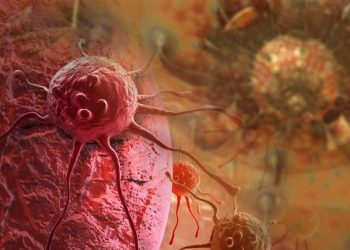Hepatocellular carcinoma is the most common type of adult primary liver cancer.1
HCC is associated with a variety of genetic mutations and epigenetic changes. Exome sequencing studies have identified specific mutational signatures, including signature 22, which is correlated with exposure to aristolochic acid (C>A mutation in CTG trinucleotide) and signature 24, corresponding to aflatoxin B1 exposure65.
Hepatitis B
Hepatitis B is caused by a virus that inflames the liver. It can cause an acute infection that goes away after a few weeks, or it can be a chronic infection that lasts for decades. The virus can be spread through contact with blood and certain other body fluids. It is most commonly transmitted from an infected mother to her unborn child during pregnancy and delivery (perinatal transmission), and it can also be spread through sexual activity, unprotected sex, or sharing personal items like razors or toothbrushes. It can also be passed from person to person through unsterile medical or dental equipment, needles for injecting drugs, contaminated syringes, or unwashed hands. It is not spread through kissing, sharing utensils, or coughing.
Hep B is especially serious for people who have weakened immune systems. In those cases, the once-dead virus can reactivate and lead to a severe or even life-threatening illness. Symptoms can include a feeling of tiredness and a fever, jaundice, abdominal pain, and a general feeling of not well. Having hepatitis B can also increase the risk of getting other diseases that affect the liver such as cirrhosis or cancer.
The good news is that the hepatitis B vaccine helps prevent this infection. If you are at risk, talk to your doctor about receiving the vaccine.
Some people don’t have symptoms when they first get hepatitis B, and many people who get it go on to live with the infection for decades without knowing it. This is called “chronic non-symptomatic hepatitis B.” The virus is still active in the liver, and it can continue to damage the organ over time, leading to serious complications including cirrhosis or liver failure.
When symptoms appear, they are usually mild and don’t last long. However, if they come and go repeatedly, that may indicate the presence of severe liver disease. The most common symptom is jaundice, but it can also be accompanied by stomach pain, splenomegaly, and fatigue. In severe cases, symptoms can progress to hepatic encephalopathy, confusion, ascites, gastrointestinal bleeding secondary to esophageal varices, and coagulopathy.
Physical examination should assess for stigmata of chronic liver disease such as palmar erythema, Dupuytren contractures, spider nevi, and gynecomastia. In addition, laboratory tests should be done to confirm the diagnosis of hepatitis B and measure liver function. Symptoms are treated with prescription or over-the-counter medications. The goal is to help the liver recover and restore normal function.
Hepatitis C
Hepatitis C is a liver disease caused by the hepatitis C virus (HCV). HCV is spread when blood from an infected person enters the body of someone who is not infected. This usually happens through sharing needles or “works” when injecting drugs, or from occupational needle stick injuries. It can also happen when a mother passes the virus to her baby during childbirth or delivery. Hepatitis C can also be passed through sex, but this is rare in long-term, monogamous relationships. Hepatitis C can also be spread when people share toothbrushes, razors, or other personal items.
About 20 percent of people who get hepatitis C develop symptoms, which include jaundice (yellowing of the skin and whites of the eyes) and fatigue. Symptoms typically begin 6 months after exposure to the virus, but may be longer. Most people who get hepatitis C become chronically infected and can develop liver disease years after initial infection.
People who have chronic hepatitis C are more likely to have HIV and can pass the virus to others. Hepatitis C is the leading cause of liver transplants in the United States. It can also lead to cirrhosis, a serious and life-threatening condition that causes scarring of the liver. Approximately 2.3 million people in the world living with HIV have serologic evidence of past or current hepatitis C infection.
Unlike hepatitis B, there is no vaccine for hepatitis C. However, effective treatments are available to prevent and treat hepatitis C. These medicines are pill-based and can be given in the clinic. They can help reduce the risk of long-term complications from hepatitis C, including liver cancer and cirrhosis.
These new antiviral treatments are safe and easy to take and can cure most people with hepatitis C. They can be taken with or without other medications and are available through the Pharmaceutical Benefits Scheme. Doctors who have been trained in treating hepatitis C can prescribe them. These include specialists in liver diseases called hepatologists, general practitioners, and specialised nurse practitioners.
Hepatitis C treatment is now easier than ever. All-tablet treatments that can cure hepatitis C have been available since 2016. These medicines are subsidised by Medicare and are available to anyone with a Medicare card, including children under 18. If your GP does not know about the new hepatitis C treatments, call LiverLine on 1800 703 003 for information and to find a GP who is experienced in treating hepatitis C. You can also access hepatitis C treatment through specialist services, harm reduction services and community health centres.
Nonalcoholic steatohepatitis (NASH)
NASH occurs when fatty deposits build up in the liver. It can be caused by drinking too much alcohol or by other medical conditions such as type 2 diabetes and obesity. Over time, this can lead to inflammation and damage to the liver. Eventually, the scar tissue can get so severe that it causes the liver to stop working properly. This can cause a serious liver disease called cirrhosis. It may also increase your risk for a type of cancer called hepatocellular carcinoma.
Fatty liver disease can usually be diagnosed by a healthcare provider who sees abnormal results on your blood and imaging tests such as ultrasound or CT scan. However, the only way to confirm NASH is with a liver biopsy. This is a procedure where a healthcare provider inserts a needle into the liver after giving you numbing medicine. A sample of your liver is then removed for examination under a microscope.
The earlier you are diagnosed with NAFLD/NASH, the better your outcome will be. NASH usually doesn’t cause symptoms, so you may not know that you have it until your healthcare provider discovers it during a routine health check or as part of your treatment for another condition such as high cholesterol. Some people with NAFLD/NASH develop cirrhosis, which can cause complications such as fatigue, swelling or fluid in the abdomen and confusion. If you have advanced NASH, your life expectancy can be reduced.
If you have NASH, it is important to control your weight and keep up with healthy eating and exercise. You should also talk to your healthcare provider about your lifestyle and take medication if your healthcare provider recommends it.
There are a few medications that can be used to treat NASH, but many of these are in early phases of research. If you have NASH, your healthcare provider will monitor your progress with regular blood tests and imaging tests to see if your liver is improving.
The best way to prevent NASH is to avoid consuming too much alcohol and maintain a healthy weight. You should also make sure to get regular health screenings for cardiovascular disease and diabetes. If you have NASH, you should see a specialist for your diabetes and GI health, and have your liver function and liver elasticity tested periodically. This can help you prevent further damage to your liver and catch the condition before it gets worse. Then you can make lifestyle changes and possibly take medicines to slow the progression of the disease. Depending on how advanced the scarring is, it can take 10 to 15 years for NASH to progress to cirrhosis. If this happens, your doctor may prescribe medication to reduce the inflammation and prevent complications from developing. This can include medication for your heart health and to lower your cholesterol.









